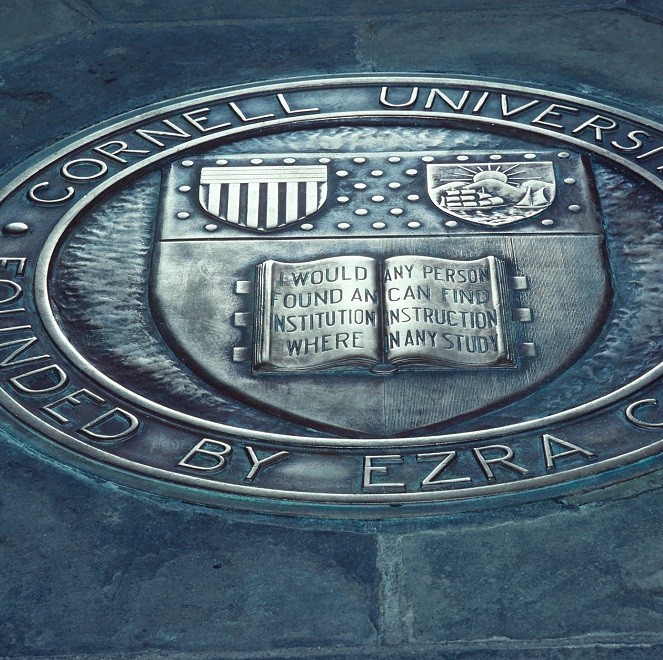News and Events
Full listing
January 15, 2013
January, 2013: Materials scientists at Cornell, including KIC member Kyle Shen, are one step closer to high-temperature superconductors. Read the paper highlighting this research in Physical Review Letters.
December 18, 2012
December, 2012: Advances in detector technology, in concert with new synchrotron sources, x-ray optics, and computational methods, are opening new ways to probe the structure and dynamics of matter.
December 14, 2012
December, 2012: Cornell researchers, including KIC members Paul McEuen and Michal Lipson, have now demonstrated synchronization at the nanoscale, using nothing but light. This research was published on December 5 in Physical Review Letters.
December 3, 2012
December 3, 2012: A research team supported by the Kavli Institute at Cornell for Nanoscale Science (KIC) has shed light on the topic of electron cooling through the first known direct measurements of hot electrons cooling in graphene. The team, which published its finding online Dec. 2 in the journal Nature Physics, includes lead researcher and KIC Director, Paul McEuen; first author and KIC Postdoc Fellow, Matt Graham; and co-authors Jiwoong Park and Dan Ralph, both KIC members.
November 29, 2012
November, 2012: KIC member David Erickson, associate professor of mechanical and aerospace engineering, and Largus Angenent, associate professor of biological and environmental engineering, have teamed up to design and build a completely new type of bioreactor that efficiently delivers light and collects fuel produced by algae inside the reactors.
October 30, 2012
October, 2012: KIC Member David Muller‘s research produces ‘ordered’ fuel cell catalysts with increased efficiency and durability. The research team has published a paper describing this work in the Oct. 28 issue of the journal Nature Materials.
September 24, 2012
October, 2012: Kavli Institute at Cornell Members Kyle Shen, Darrell Schlom and David Muller's paper, "Quantum Many-Body Interactions in Digital Oxide Supperlattices," featured as cover story for October Issue of Nature Materials.
September 4, 2012
September, 2012: By combining oxide molecular beam expitaxy and angle-resolved photoemission spectroscopy, Kavli Institute at Cornell members Kyle Shen, Darrell Schlom, and David Muller have gained the first insights into quantum interactions in transition metal oxide superlattices.
August 29, 2012
August 2012: Integrated circuits, which are in everything from coffeemakers to computers and are patterned from perfectly crystalline silicon, are quite thin - but Cornell researchers and Kavli Institute at Cornell members Jiwoong Park and David Muller think they can push thin-film boundaries to the single-atom level.
June 22, 2012
May 31, 2012: Cornell alumnus Winfried Denk, Ph.D. '90, co-inventor of two-photon microscopy, has received the Kavli Prize in Neuroscience. Denk was cited for two imaging techniques that have helped answer questions about how information is transmitted from the eye to the brain, according to the Kavli Prize citation.

